Buying a new suit can be confusing when you don't know what you're looking for.
There are so many decisions involved and so many materials, colors, fits and styles to choose from.
And choosing the wrong suit can cost you hundreds or even thousands of dollars!
In this article, we're saving you time, money whole lot of headache. We explain exactly what to look for when buying a suit.
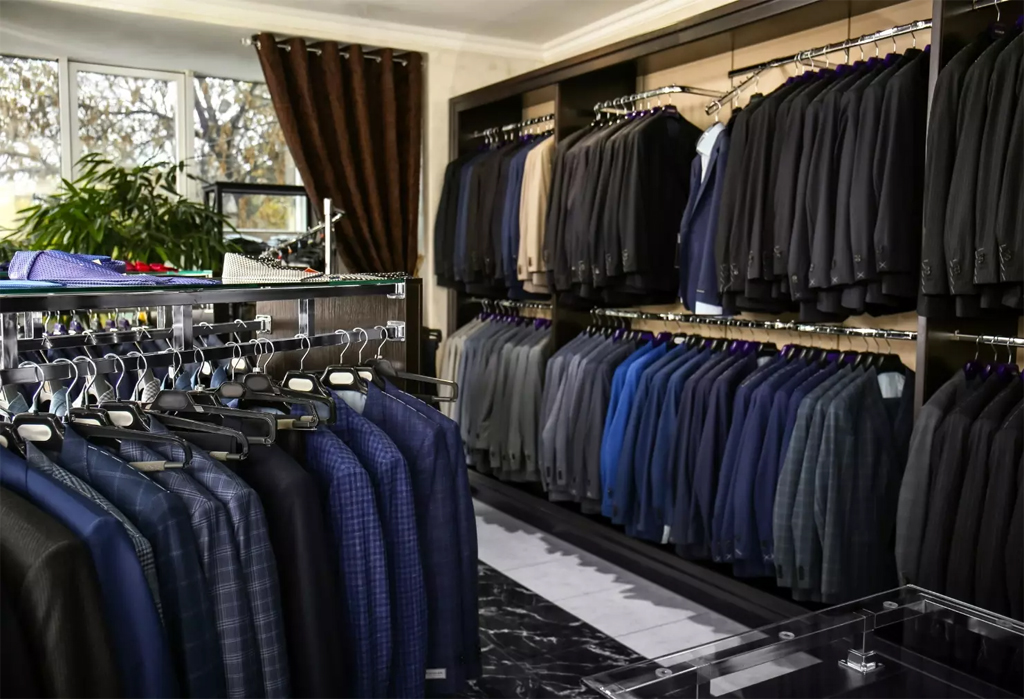
Ready to get started? Let's suit up!
- Choose: Buying Online Or Offline?
- Set Your Budget
- Choose Your Fabric
- Nail The Fit
- Choose Function Over Fashion
- Choose Your Dress Shirt
- Match Your Shoes With Your Suit
- Choose Your Neckwear
- Accessorize Your Suit
- Level Up Your Grooming
We'll assume you're starting at Ground Zero. Maybe this is your first suit – or it's been a decade since you bought a suit but you need one in two weeks for a wedding.
So let's start things off by defining what a suit is.
A man's suit is a jacket and a pair of trousers made of the same material.
Notice it says ‘the same' – not just similar. Many guys make the mistake of trying to palm off a pair of trousers and a similar jacket as a suit.
Don't do it. Those in the know will notice.
Suit Buying Rule #1. Buy A Suit Online Or Offline?
Your first step is to make a decision: will you buy your suit online or offline? Which is better? That depends on what YOU value.
Buying a suit online
If you want options, the best selection is always going to be online.
For convenience, nothing beats buying online. You can buy a custom suit at 2 AM in your underwear while drinking a beer.
Buying a suit offline
If you need a suit quickly – you're going to need to walk into a store.
If you want customer service, go to a higher-end menswear store – you can spend 30 minutes with an expert who can identify your body type and which styles and colors will look best on you.
This article is brought to you by Anson Belt & Buckle – a father and son run family business and makers of micro-adjustable men's belts.
Anson's revolutionary holeless belt design offers over 30+ options spaced one-quarter of an inch apart. That way you can enjoy a perfect fit, every time.

Anson Belt's buckles and straps are detachable so you have the power to assemble any belt you can imagine! Click here to discover Anson Belt & Buckle and get free U.S. shipping and a lifetime guarantee!
Suit Buying Rule #2. Set Your Budget

For your first suit – or your first suit in a while – you want to spend between $200 and $2000.
The real price range of suits is much wider. You can spend $10 in a thrift store or $5000 in Savile Row. But $200-2000 is the happy medium area where most guys can find a great-looking suit.
Want a more specific number? Budget half your monthly salary – not just for the suit but for everything that goes with it. That includes the shoes, the shirt, and the belt – which we'll talk about later.
You're going to hear the words ‘off the rack', ‘custom', and ‘bespoke'.
- ‘Off the rack' means ready-made. That suit's just hanging on a rack waiting for you to buy it. For most people, this will work fine – and you'll find the best deals here.
- ‘Custom' or ‘made to measure' means it's made to fit your measurements out of different pre-cut pieces. This is a great option if you're hard to fit.
- ‘Bespoke' means it's made from scratch to your exact specifications. You speak, and your tailor listens. For your first suit – ignore bespoke. Bespoke suits are a work of art, but they're much higher in price.
Suit Buying Rule #3. Choose Your Fabric

If you've got the money, look for a suit in 100% wool – it's a great indicator of quality. Because wool is an expensive material, you'll also see blends – 70%, 50% 0r 30% wool.
Blends aren't necessarily bad – they'll save you a lot of money. But they are a sign of a lower-end suit – a manufacturer who uses blends is probably cutting corners elsewhere too.
If you're spending over $500-$1000, you're going to be getting 100% wool, and you're also going to start seeing ‘super' wools – Super 80, Super 100, Super 120, and so on.
There's not a uniform system to these numbers. Every company's ‘supers' are different. In general, a higher number means a tighter yarn and, therefore, a more luxurious drape.
What makes a quality suit material is a question with no single answer. Any material with ‘super' in it will be great quality – so don't pay extra to get a Super 220 instead of a Super 100.
Now, what about color? Pick one of three – navy, charcoal, or gray. No light gray and no blue – those are too casual. And no black – that's for black tie.
A small pattern that's not noticeable is perfectly fine, but avoid noticeable patterns until you're on your third, fourth, or fifth suit.
Suit Buying Rule #4. Fit Is King
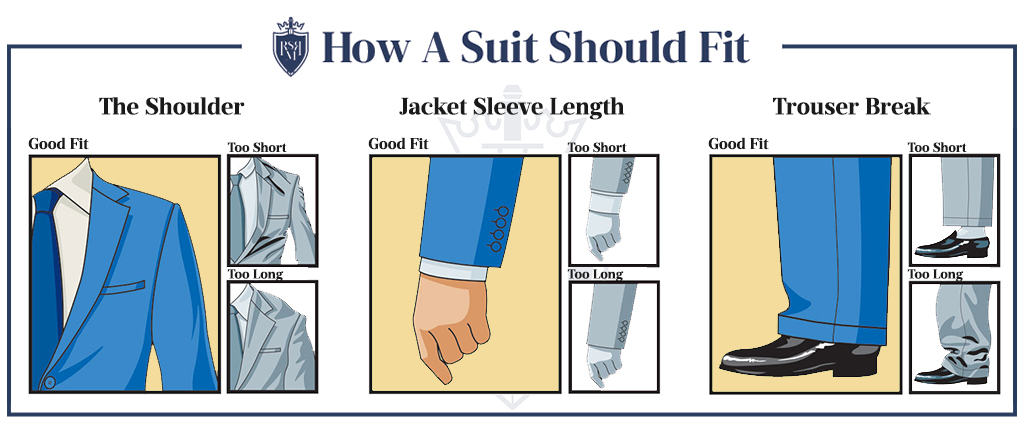
Fit is king. A $50 suit that fits you will look better than a $2000 suit that doesn't. Do not buy a suit that doesn't fit you unless you know it can be adjusted.
If you have to pay more to get something that fits – go ahead. If you're unusually tall, short, thin, stout, or muscular, you may have to go custom.
For the rest of you – here are the specific areas to focus on to get a well-fitted suit off the rack.
Suit jacket shoulders
Don't buy it if the shoulders don't fit. Adjusting jacket shoulders is like heart surgery – it's very complicated and costly!
Suit jacket chest size
If you can fit two fists in the front of the jacket, it's way too big. A tailor can bring it in a bit – but more than two inches will change the proportions, and the position of the pockets and the jacket will look bad.
What if it's too tight in the chest? Higher-end suits should have some extra fabric in the seams so a tailor can let it out by about an inch.
Suit jacket length
Put your arms by your sides. The jacket should reach down to your knuckles, give or take an inch.
At the back – your jacket should cover your buttocks. It shouldn't be much longer or shorter than that.
Suit jacket sleeve length
Put your arms by your sides again – the sleeve should go to about your wrist bone and show a quarter to a half-inch of your shirt cuff.
If the sleeves are way off, don't worry. They're one of the easiest things to adjust – up to an inch and a half, or even two inches on bigger suits.
Suit trousers fit
Make sure the waist fits you well. If it's slightly too big – or even slightly too tight – a tailor can fix that.
Also, pay attention to the hip area. Your tailor may complain about adjusting this – but if it's way too loose, get it brought in.
Suit trouser length
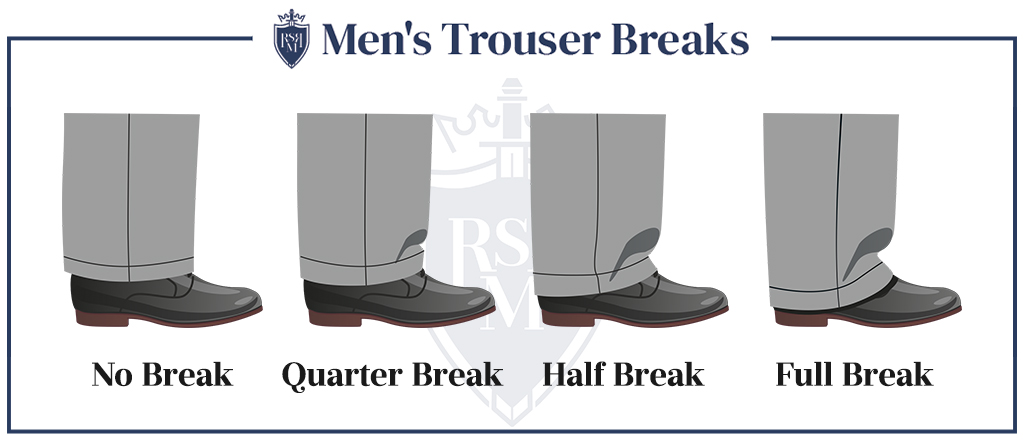
When your trousers are longer than your legs, the extra fabric creates a ‘break' or fold just above your shoes.
You can choose trousers with no break, a quarter break, a half break, or a full break.
Again – fit is king. When you're buying a suit off the rack, the store should have a tailor who'll adjust it for you.
If they charge for this, it's not a bad thing – you'll often find you get better service because you're paying for it. ‘Free' tailor service is probably built into the price of the suit.
Suit Buying Rule #5. Function Over Fashion
You want to create a timeless suit that will serve you six months from now and six years from now – not a fashion trend that'll be out of style in a year.
Suit buttons
When buying a suit you'll notice there are one, two, three, four, and even five-button suits. Stay away from the ones, fours, and fives.
For 95% of you, the two-button suit will be the best choice. It's a great classic look. If you're taller and want to look a little more formal you can go with three.
Or pick something between the two – yes, you can actually get a ‘two and a half button' suit. This is a three-button suit where the top button is designed to be left undone.
Suit lapels
Your options are notch, peak, and shawl lapels.
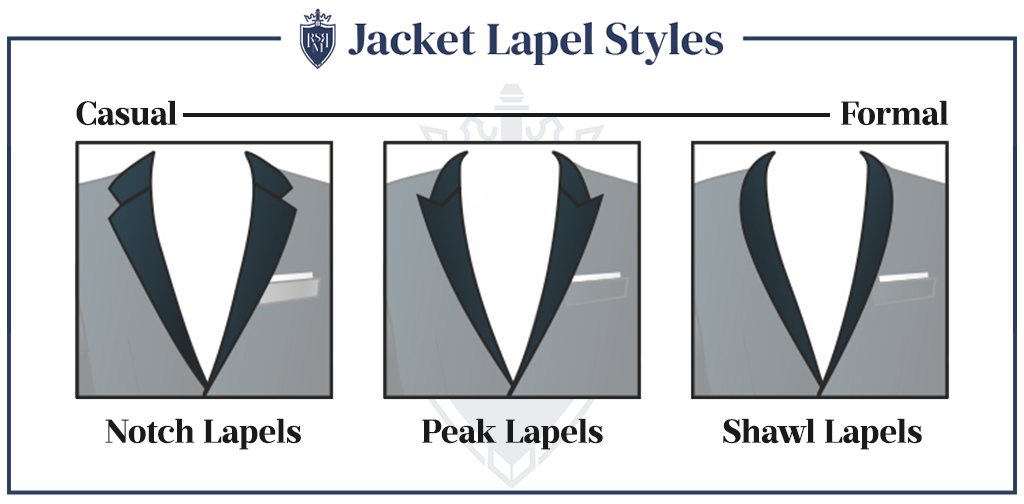
Don't touch the shawl lapel – that's for formal wear.
Peak lapels are more formal than notch lapels. They're fine if you really like the look – but be aware that they'll grab attention.
Your best bet is the notch lapel. It's not going to win any awards for creativity – but it's timeless and will still be in style in a decade.
Suit jacket pockets
Do you want your pockets sewn into your jacket, or on top of your jacket?
The ones sewn on top are known as patch pockets. They're very casual. For a versatile suit, you should go for pockets that are sewn in and have a flap.
Suit jacket vents
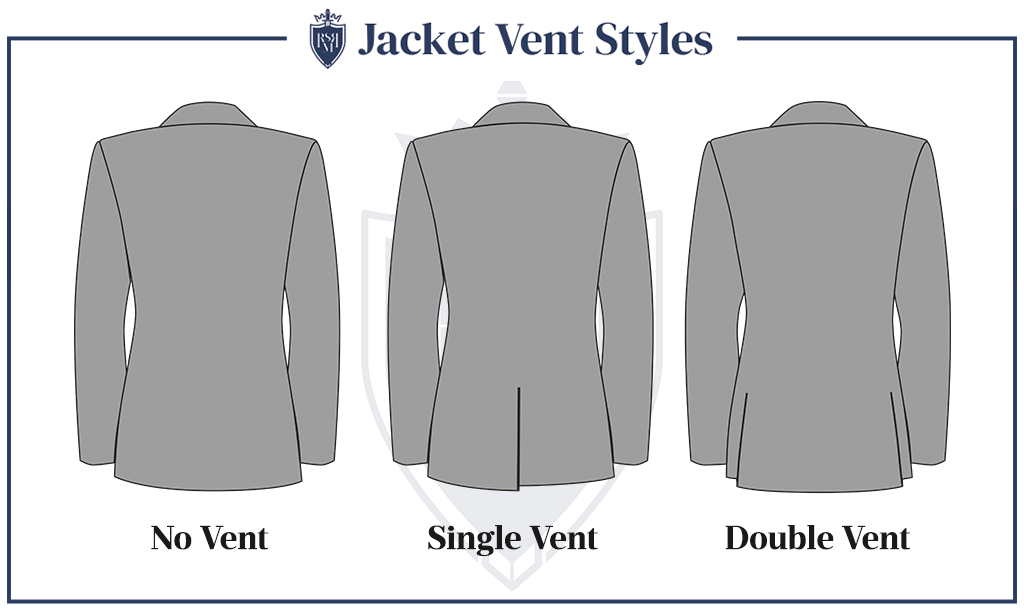
Vents are the slits in the back of your jacket that give you more room to move. You can choose a single vent, double vent, or no vent.
No vent is rare – mostly found in custom and Italian suits. It looks fine if you don't put your hands in your pockets and if you want to create a slimmer profile.
The single vent is the most common and WORST looking of all the vents. Try putting your hand in your pocket with this one – everyone can see your backside.
The double vent is the best. When you're walking it creates a more streamlined look – and it's designed not to show your backside even if you're riding a horse.
Suit Buying Rule #6. Buy The Right Dress Shirt
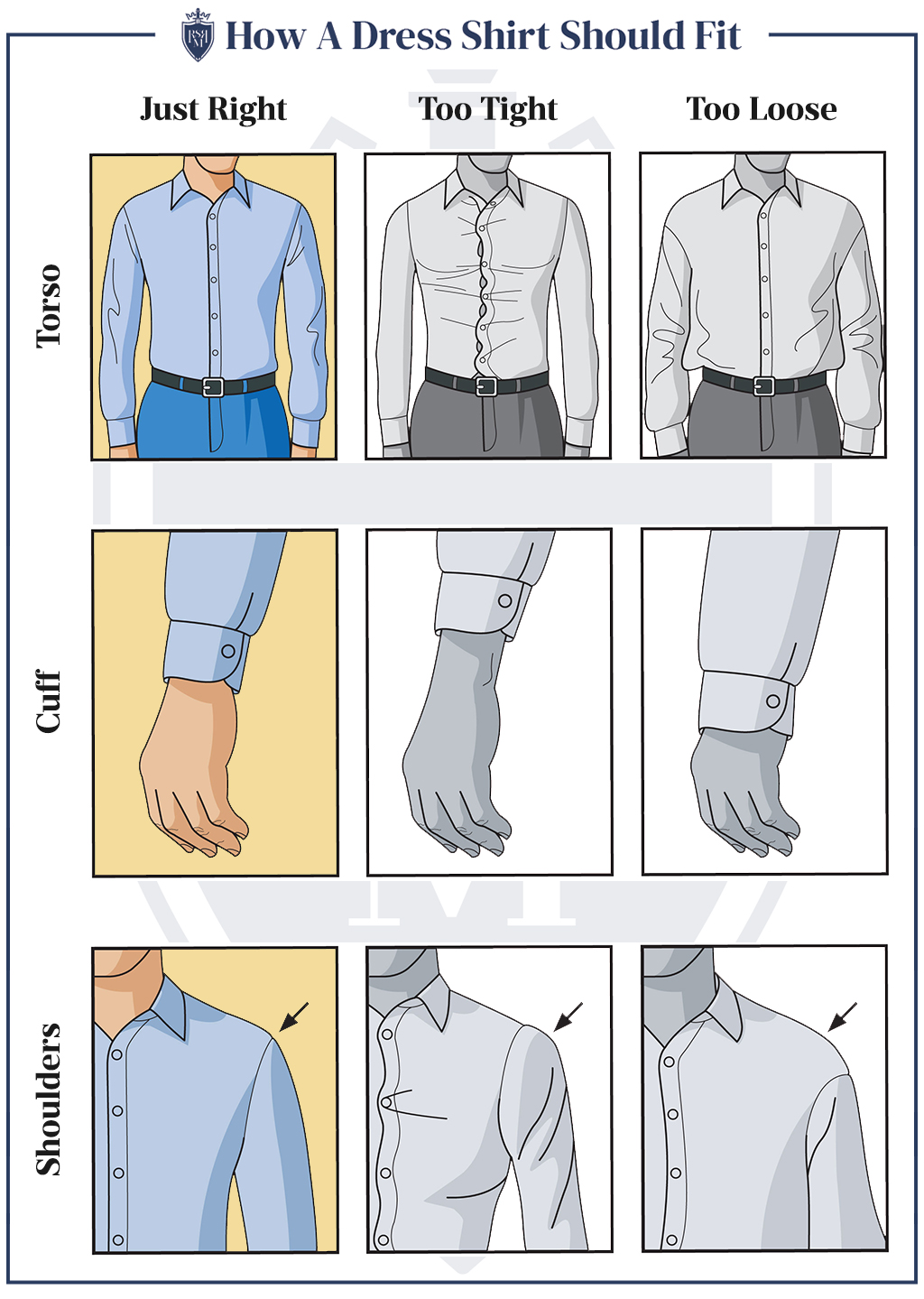
Yes – a suit is a jacket and trousers made from the same material. But it's also everything that goes with it to make you a sharp-dressed man. A chain is only as strong as its weakest link – so getting details like your shirt wrong can weaken the entire look.
Light blue, pink, and lavender are all acceptable colors for dress shirts – but classic white is best. It's the most formal, creates the highest contrast, and matches almost anything.
A good fit in the neck area is key because you're going to button it up and wear it with a necktie.
Also, make sure it's got a turn-down collar in a medium spread or a point. Point is the classic collar that works with most necktie knots. If you prefer a wider knot you can go for a medium spread.
Don't go for a wide spread – that's a more casual style. And definitely avoid button-down collars – they're way too casual for a suit.
The shirt cuff should be a single button. You can also go for a two-button if you get something custom-made. Cufflinks are not recommended for your first suit – they're more formal and take a bit of attitude to pull off.
And while this may seem obvious – your dress shirt must always be tucked in.
Want to learn more? Read – how a dress shirt should fit.
Suit Buying Rule #7. Match Your Shoes With Your Suit
The classic shoe to get when you're buying a suit is a black Balmoral Oxford.
Oxfords are the most formal shoe style, thanks to the sleek simplicity of their closed lacing system. Closed lacing means the front part of the shoe (the vamp) covers the back part (the quarters) – producing a clean, smooth look.
If you want to change it up, a dark brown or burgundy Oxford is fine – just a little less formal.
A brown Derby is more casual still because it has an open lacing system (with the quarters on top of the vamp), but you can still pull it off with a suit.
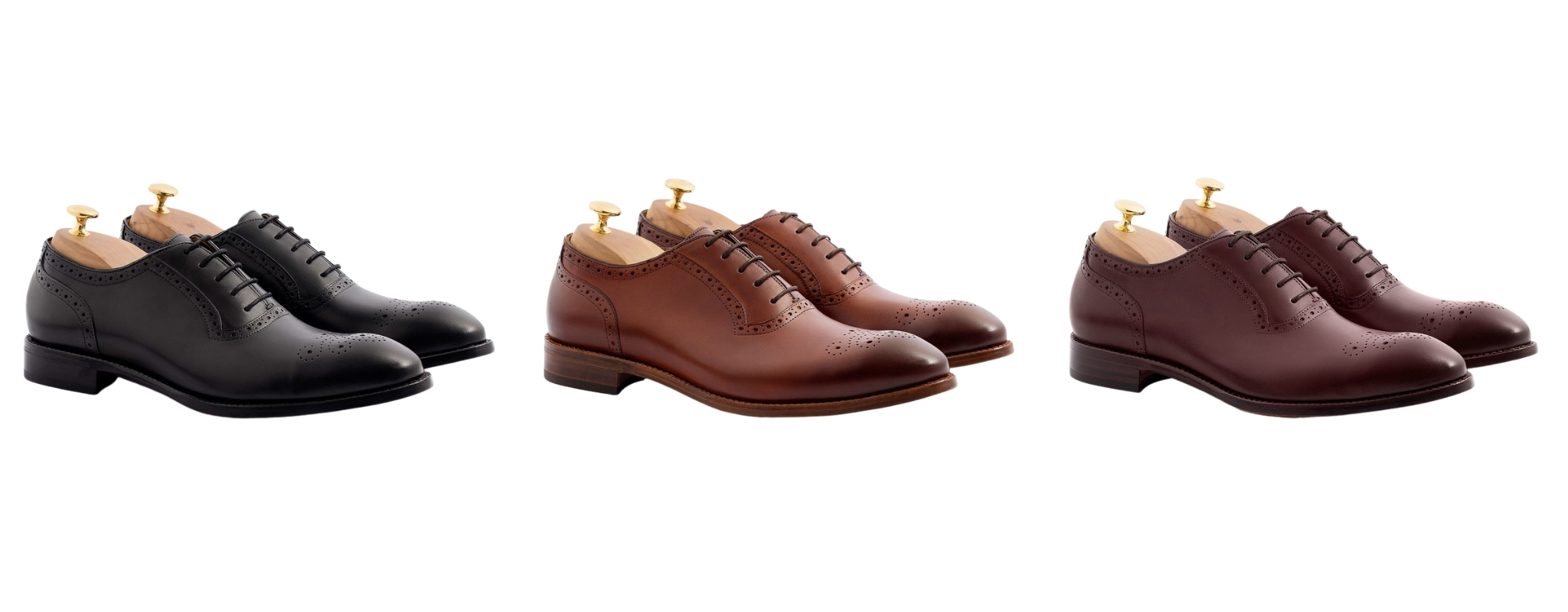
Sneakers with a suit are best reserved for guys with some serious rock star attitude.
Loafers are really too informal for all but the most casual suits. But you can get away with them, especially in the United States at a casual event.
For a more detailed breakout of exactly what color shoes to wear with your suit, read my article – How To Match Your Dress Shoes And Suit.
Suit Buying Rule #8. Choose Your Neckwear
Classically, a suit is worn with neckwear. You could say it ties the outfit together.
Red is always a safe color (unless it's a bright neon red). You can also go with dark blue or dark green – or purple, the color of kings.
Stick with plain colors, small repeating patterns such as pin, dot, or regimental stripes. These diagonal stripes were created by the British to represent different clubs and military regiments, and despite being a bold pattern they're formal enough to wear with a suit.
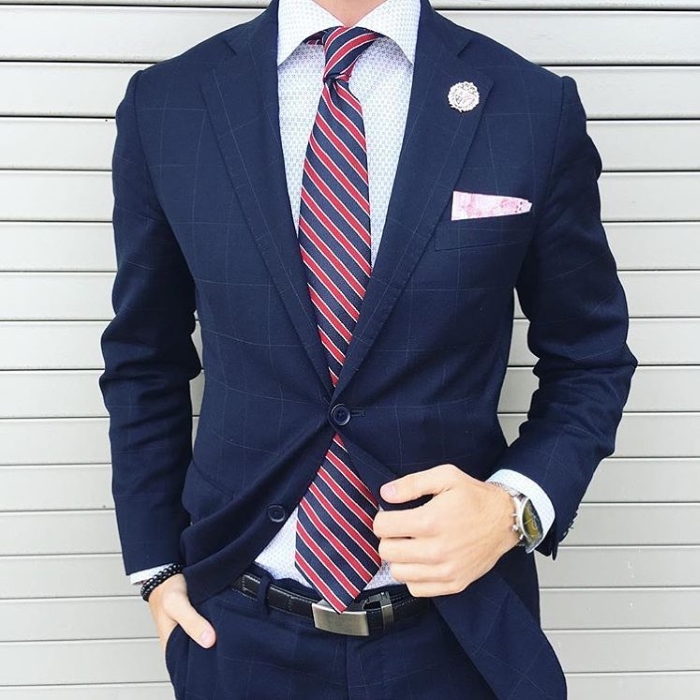
In general bold patterns, bright colors, and knit fabrics make a tie too casual to look right with a suit.
Bow ties are technically just as formal as a long necktie. A bow tie in a solid color won't break the suit rules – but it will set you apart. It might be fine at a wedding but a little attention-grabbing for a funeral.
Suit Buying Rule #9. Accessorize
Whatever accessories you wear with a suit – watches, rings, necklaces, nose piercings, earrings – keep them restrained unless you're an over-the-top rockstar.
The best watch to wear with a suit is a simple dress watch that tells you the time, maybe the date, and nothing else. You don't want a lot of complications.
Classic dress watches have a black or dark brown leather strap, but a simple metal band is also fine.
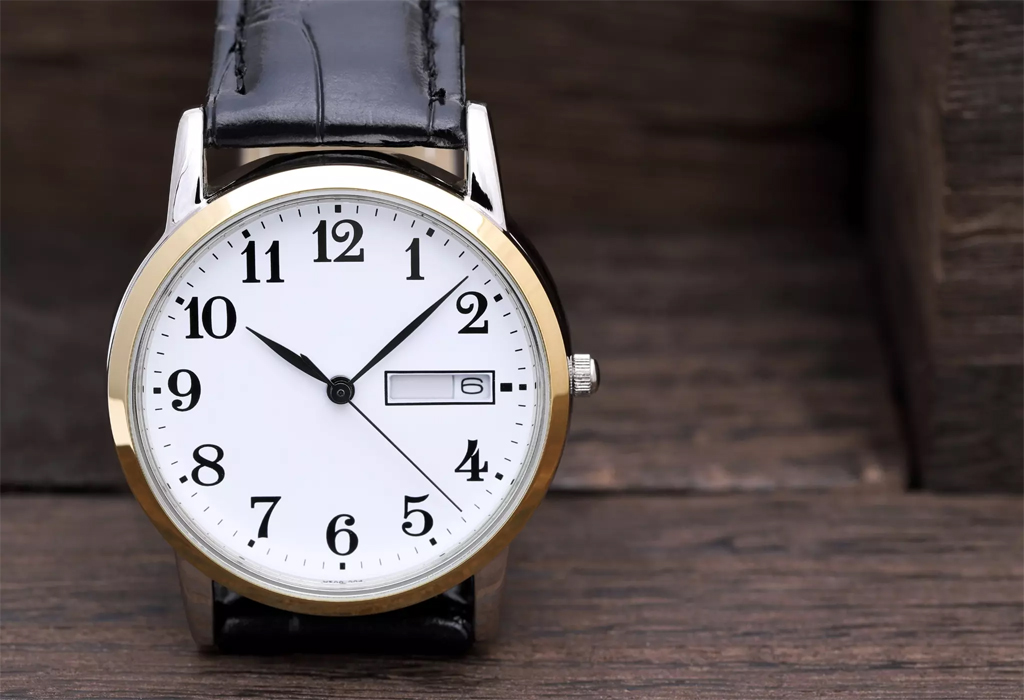
Avoid dive watches that are clearly made to be worn as sport watches – nothing oversized or gaudy and no rubber straps.
Now, what about belts – should you or should you not wear a belt with a suit? It depends on your trousers. Do your trousers have belt loops? Then wear a belt.
Try to match the leather of your belt to your shoes and the metal to your other metals.
Suit Buying Rule #10. Level Up Your Grooming
Remember, a chain is only as strong as its weakest link. So clean and trim your nails. Take care of your skin. Make sure that you shave or groom your facial hair.
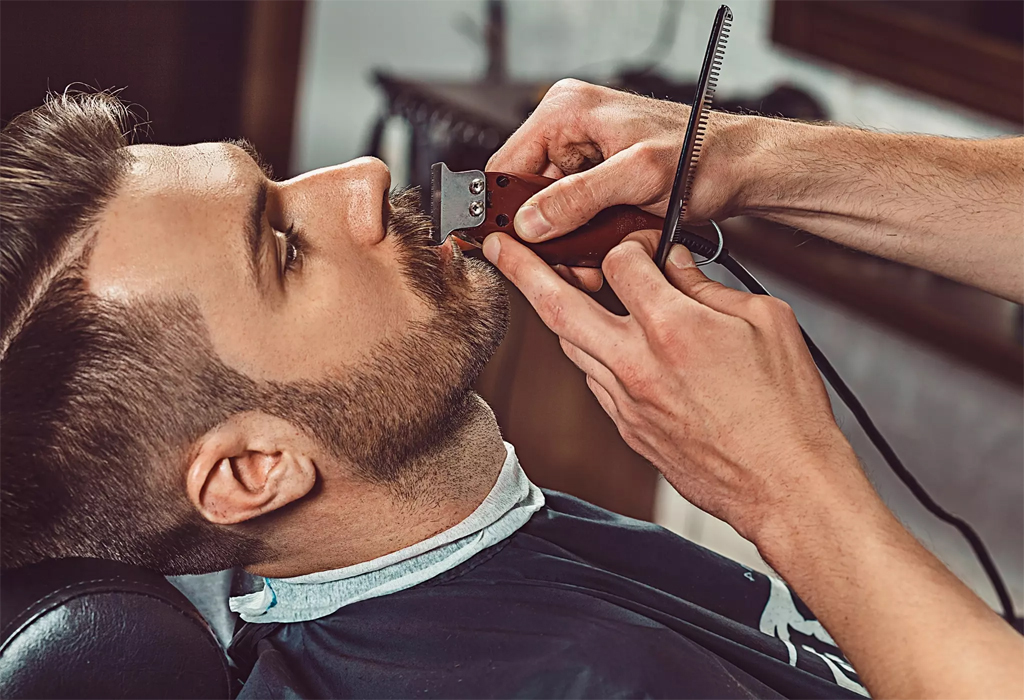
If you don't shower and your nails are dirty – you might as well not bother buying a suit. Nobody will think you look good.
Make sure your hair is well cut and groomed too. Because you're dressing sharp, you can use a hair product with a bit of shine if you want to look like Harvey Specter. That's a good look with a suit. But go with whatever works for you – as long as you take care of that grooming.
Click below to watch the 10 Golden Rules To Buying A Suit:
Listen to the podcast – The Suit: Foundations of a Strong Wardrobe
The post How To Buy A Stylish Suit (10 Golden Rules) appeared first on Real Men Real Style.
